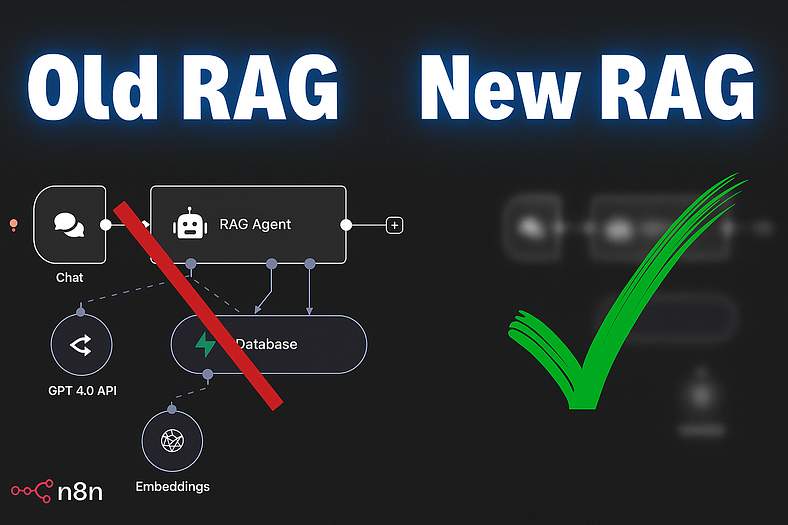How Rerankers and Metadata Instantly Make Your RAG Agents Smarter

If you’ve ever built a RAG (Retrieval-Augmented Generation) system, you know how powerful it can be — but also how frustrating it is when your agent pulls back the wrong information. The new reranker feature in n8n solves that problem, and with just a little setup, you can make your AI agent instantly 10x smarter.
In this article, we’ll walk through:
By the end, you’ll see how to build RAG agents that answer questions more accurately and filter results with precision.
The Problem with Chunk-Based Retrieval
Most RAG systems follow the same flow:
Split documents into smaller chunks.
Convert those chunks into embeddings (numerical representations of meaning).
Store them in a vector database.
When a query comes in, embed the query, find the nearest chunks, and pass them to your LLM.
Simple, right?
The issue: your agent always pulls back something — even if it’s irrelevant. For example, if you ask about “rule 27” in the rules of golf, the system might retrieve chunks about rule 26 or 28 just because they’re close in vector space.
This is where rerankers come in.
Enter the Reranker
Instead of just pulling back the top 3 or 4 nearest chunks, we can:
The reranker essentially acts as a second layer of intelligence. Instead of relying purely on vector closeness, it reads the candidate chunks, understands the query, and decides which passages are truly the most relevant.
In testing, even when raw retrieval produced weak matches, reranking rescued the results and gave much higher-quality answers.
Why Metadata Matters
Chunk-based retrieval has another weakness: context fragmentation.
For example, in a golf rulebook, one rule might be split across three chunks. If a user asks about “rule 3,” the agent might miss parts of it because none of the chunks explicitly say “this is rule 3.”
That’s where metadata saves the day.
By tagging each chunk with metadata — like rule number, project name, client name, or date — we can query with filters. Instead of hoping the embedding matches, we can force the system to return only chunks that belong to “rule 27” or “meeting transcript on June 20.”
This approach ensures precision and reduces noise in retrieval.
Setting It Up in n8n
n8n now makes this process much easier:
Vector Store Setup
Add Reranker
Use Metadata Filters
This combination — vector search + reranker + metadata filter — dramatically improves retrieval accuracy.
Example: Smarter Golf Rulebook Queries
Without reranking, asking “Tell me about rule 27” caused the agent to return chunks from rule 26 and 28 with low relevance scores.
With reranking enabled, the system quickly isolated the actual rule 27 chunks.
And when metadata filters were added (e.g., rule_number = 27), the agent nailed it on the first try, pulling only the correct passages.
The Big Picture
RAG systems are only as good as their retrieval. By combining:
✅ Rerankers (to prioritize the best results) ✅ Metadata (to enforce precision) ✅ Vector search (to capture semantic similarity)
…you can build AI agents that feel significantly smarter and more reliable.
If you’re experimenting with n8n, Supabase, and Cohere, try playing with these tools yourself. Once you see the reranker in action, you’ll never want to go back to raw vector retrieval.
💡 Pro tip: Set thresholds for relevance scores. For example, keep only chunks scoring above 0.7. This ensures your agent doesn’t hallucinate answers from weak matches.